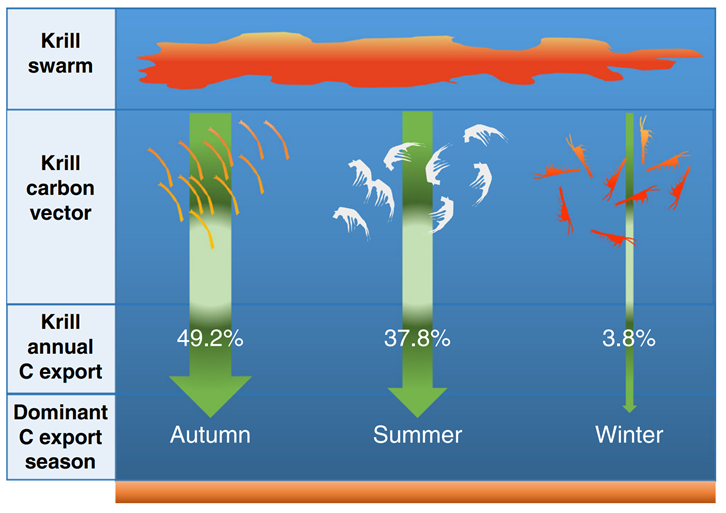Authors: C. Manno, S. Fielding, G. Stowasser, E.J. Murphy, S.E. Thorpe & G.A. Tarling
Antarctic krill play an important role in biogeochemical cycles and can potentially generate high-particulate organic carbon (POC) fluxes to the deep ocean. They also have an unusual trait of moulting continuously throughout their life-cycle. The authors determine the krill seasonal contribution to POC flux in terms of faecal pellets (FP), exuviae and carcasses from sediment trap samples collected in the Southern Ocean. They found that krill moulting generated an exuviae flux of similar order to that of FP, together accounting for 87% of an annual POC flux (22.8 gm−2 y−1). Using an inverse modelling approach, they determined the krill population size necessary to generate this flux peaked at 261 gm−2. This study shows the important role of krill exuviae as a vector for POC flux. Since the krill moulting cycle depends on temperature, our results highlight the sensitivity of POC flux to rapid regional environmental change.
